
The regions HDCH offers busing from are:
Additional notes: There are a variety of bus transportation options for getting to Hamilton District Christian High. Busing transportation to and from HDCH is managed by committees in each of the following areas. Contact them directly for details on routes and fees. Brantford – Brantford Christian School Leanna Silver, [email protected] or [email protected] or 519-752-0433 Burlington – [email protected] 905-648-6655 Dundas – Providence Christian School (formerly Dundas Calvin Christian School) [email protected] or 905-627-1411 Hamilton – Hamilton Calvin Christian School Jim Hosmar – [email protected] or 905-388-2645 x227 Jarvis/Simcoe – HDCH Transportation Emily deRuiter, [email protected] or 519-428-3668
How we see Hamilton District Christian High
Founded in 1956, HDCH has been doing great and impressively consistent work ever since. It has a good breadth of curricular and extracurricular offerings. Instruction is connected with projects, encouraging students to work together toward completing meaningful tasks, which builds and supports a facility with the core curriculum. Families are also drawn by the values which undergird the academic program. The school reaches out to resources and organizations within the local community, using those interactions to build an empathetic worldview and a genuine appreciation of diversity. Certainly, there’s a lot to love.
Compare with:
How Hamilton District Christian High sees itself
"At HDCH, our mission is to cultivate student character, through learning, for lives of service to God. Our vision is to see all HDCH graduates be a faithful presence in the communities that they serve."
"At HDCH, every staff members seeks to know every student. Our students tell us that what they love most about the school is the strong sense of community, as well as the warm, dedicated and care exhibited by every teacher. Our building is located on 20 peaceful acres, set back from the road, providing a peaceful setting for our students. We have baseball, disc golf, beach volleyball and soccer facilities. Indoors, we have relevant technology including robotics and 3-D printers."
"Families appreciate our relevant learning opportunities, the sense of community, the passion and caring from the teachers as well as our faith-based learning approach. They appreciate the breadth of extra-curricular opportunities, as well as the Project-Based Learning approach to classroom work. They also love the fact that our students are focused on service...taking curriculum and turning it into something that helps others."
"Although families might see our technology in photos and when they visit, the degree to which we engage students in science, technology, engineer and mathematics is not always clear until the student is here. We go to great lengths in all our subject areas, and the STEM area is one at which we excel."
"Families are often surprised to experience the degree to which our teachers commit to our students. As they witness the many ways our staff provide wrap around supports, guidance, opportunities and possibilities, they frequently note that it is one thing to read about it, and another to experience it. In a parent's words: It was so completely and wonderfully surprising for us that HD, along with a Christian education, also offered project based learning - something that really stood out to us"."

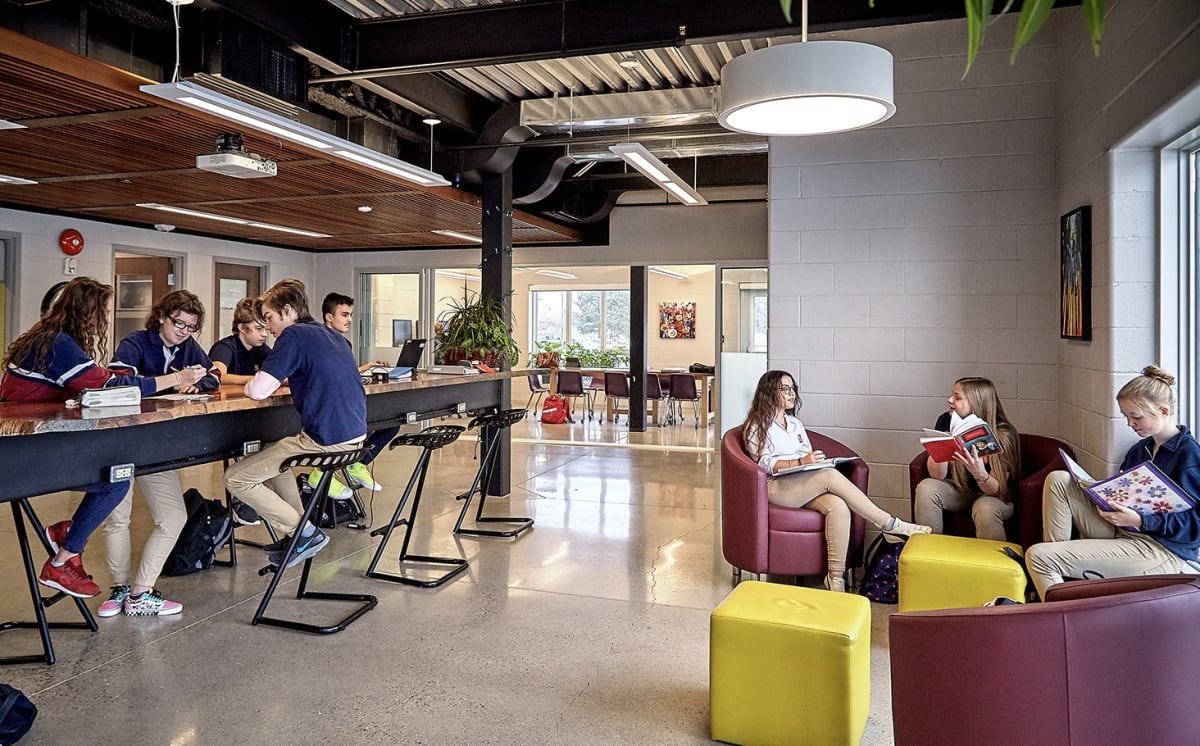
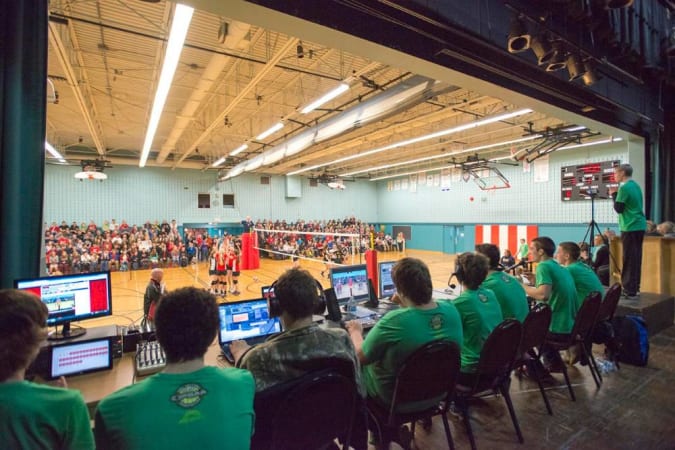

Our large soccer field


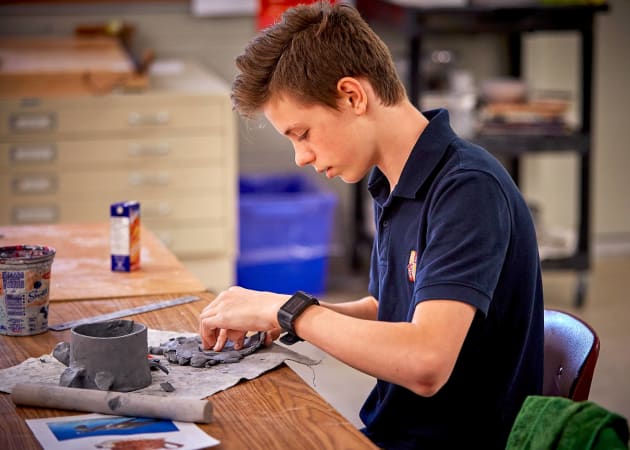


Front of HDCH
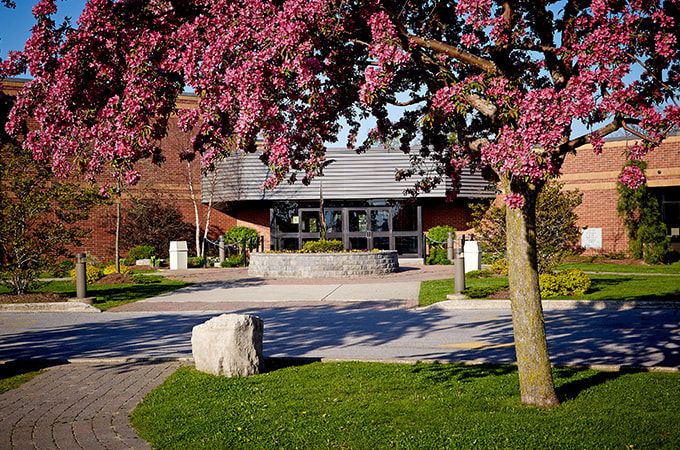
Main doors


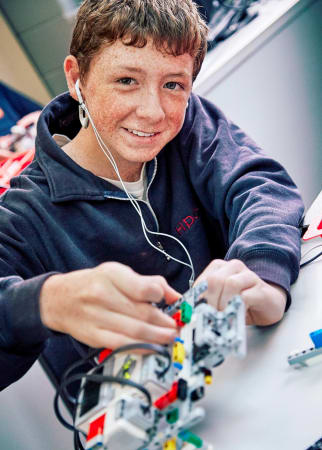
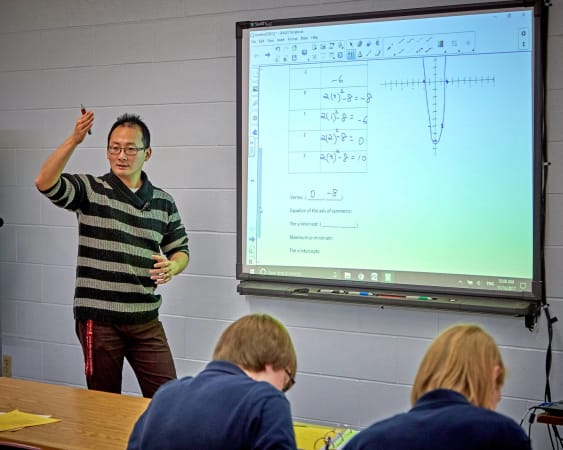
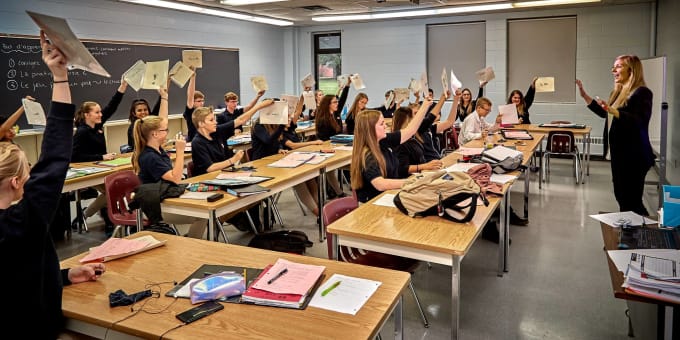





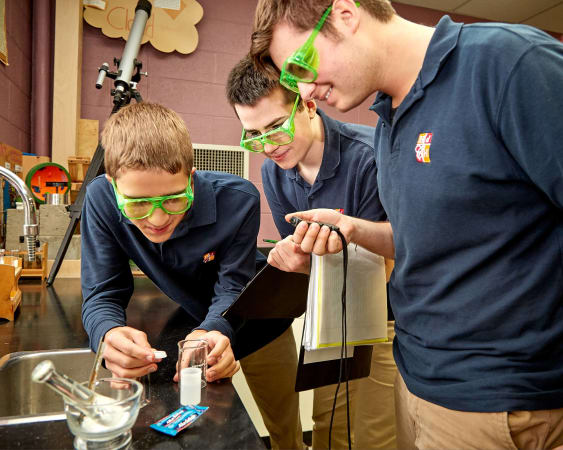




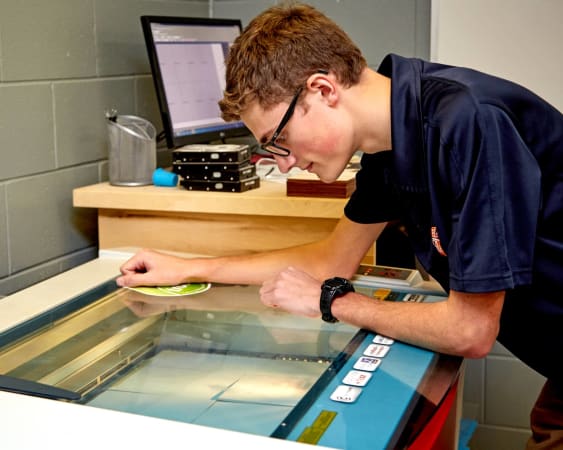
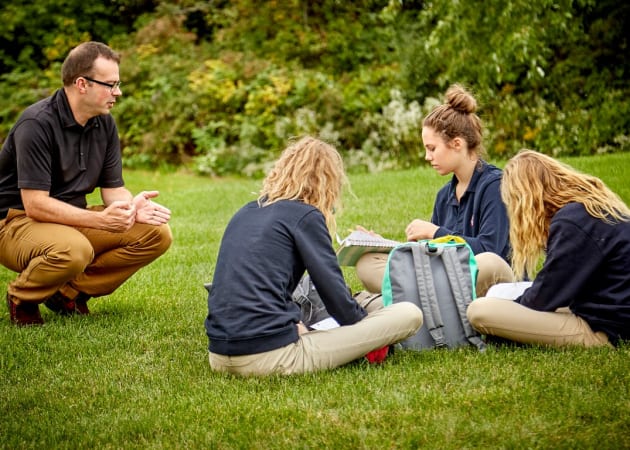




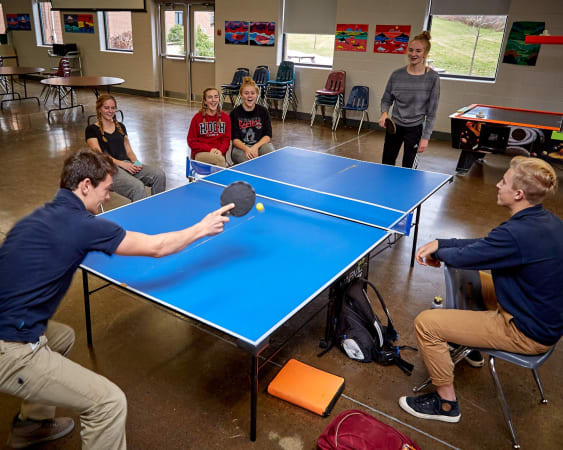
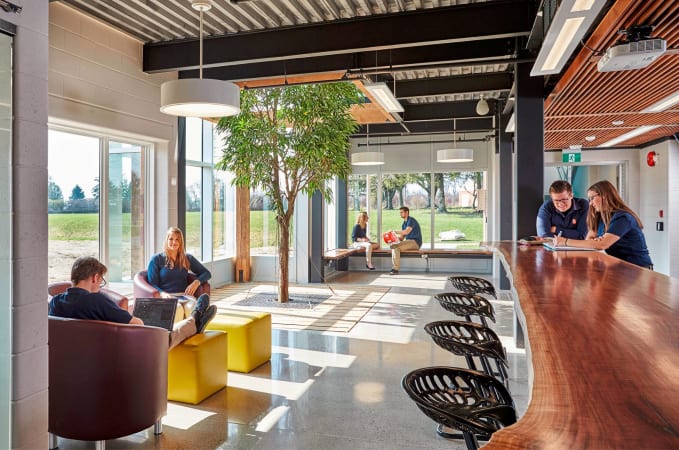





How people from the school’s community see Hamilton District Christian High
Top-down influence on the school’s direction and tone

Duncan Todd, Principal
M. A., M. Ed
Exceptional learning is for every student. Each student has unique gifts, abilities, and learning styles. We work to differentiate learning so that each student can succeed. We provide support for academic planning and development, learning, and individualized programs where appropriate.
Our staff takes a vested interest in student learning, growth, and spiritual well-being. They develop a mentor relationship beginning in Grade 9 and foster these connections through to Grade 12, often going above and beyond to get to know each student as a unique person with diverse interests, strengths, and gifts.
We understand that ultimately God transforms the lives of our students at HDCH, and it is with this in mind that we trust in our mission to be clear and to be the directive of our school. We use the five habits of an HDCH graduate.They are:
Exceptional education at Hamilton District Christian High is imaginative, innovative and interwoven with our essential Biblical identity. An exceptional learning community looks to produce and engage with culture by turning our visions into actions, our ideas into products. One of the ways that we will accomplish this is through the essentials of Project-Based Learning (PBL). And it is our vision to have Project-Based Learning as an everyday learning experience for our students at Hamilton District Christian High.
At the core of Project-Based Learning is that real-world problems capture students’ interest and provoke serious thinking as the students acquire and apply new knowledge in a problem-solving context. This learning is contextual, creative, and shared. Students collaborate on meaningful projects creating opportunities for groups of students to gather information, think critically be creative and communicate in order for them to answer challenging questions or solve complex problems. By making learning relevant to them in this way, students see a purpose for mastering state-required skills and content concepts.
Hamilton District Christian High is registered as a private school with the Ontario Ministry of Education. It provides a curriculum that follows Ministry guidelines and standards and uses the credit system outlined in the Ontario Secondary School Document (1999). All the teachers have Ontario teacher’s certification. Graduating students will have completed the credits required for the Ontario Secondary School Diploma.
We believe HDCH is a place to dream dreams and see visions, a place to learn and grow and be cultivated, a place to live as a healthy community, a place for exceptional learning. The learning that happens here is a launching pad for our graduates’ futures; this is exciting stuff.
We’re always happy to welcome our friends and supporters to school. If you are in the neighbourhood, we hope you’ll drop by and experience exceptional learning first-hand.
Sincerely,
Duncan
Most big schools provide your extroverted child with plenty of social opportunities and the ability to interact with different peer groups with a wide range of personalities, interests, values, etc. A larger student population and more extracurriculars—including activities like team sports, arts programs, and debate—will give them a broader scope of opportunities to participate in events that scratch their interpersonal itch. “This may also give them the opportunity to hone certain skills,” say Ann and Karen Wolff of Wolff Educational Services. “For instance, they might run for student council to develop leadership and public speaking skills and learn to be a voice for other students.”
Make sure any prospective school, no matter what size, provides the right social environment to help your child feel at home, make friends, and develop confidence. This is especially important at big schools, which are sometimes more socially overwhelming and challenging for an introvert to find their bearings in. Of course, “Because larger schools usually have a more diverse student population, introverted kids are more likely to find a small group of people like them, a peer group they can relate to and find acceptance from,” says Dona Matthews, Toronto-based education consultant and co-author (with Joanne Foster) of Beyond Intelligence.
Bigger schools often have a broader scope of extracurricular activities, which is another way to help your child meet the right group of friends. “This may also give them the opportunity to develop certain skills,” say Ann and Karen Wolff of Wolff Educational Services. “For instance, they might run for student council to develop leadership and public speaking skills and learn to be a voice for other students. Remember, though, each child is different—so what works for one may not work for another.”
THE OUR KIDS REPORT: Hamilton District Christian High
Next steps to continue your research:
Continue researching Hamilton District Christian High with OurKids.net, or visit school website.